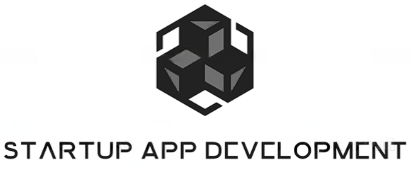Building a strong relationship with your app development partner is crucial to the success of your project. Whether you’re a startup or a well-established business, a solid partnership can drive innovation, efficiency, and quality. In this blog, we’ll explore fifteen practical tips to nurture a positive and productive relationship with your app development partner.
1. Establish Clear Communication Channels
Ensure that there are established channels for regular communication. This helps avoid misunderstandings and keeps everyone on the same page.
Clear and consistent communication is the backbone of any successful business partnership. Maintaining open dialogue through tools like Slack or Basecamp ensures everyone is aligned with the project’s goals and deliverables. It’s essential to keep all team members informed of progress, changes, and any potential risks. Prioritizing communication can greatly reduce the chances of miscommunications and delays.
According to a recent study, clear communication is one of the most critical factors in forming a successful software development partnership. Regular meetings, detailed reports, and ongoing status updates can keep all stakeholders informed and engaged, creating a more transparent and efficient workflow.
An essential part of establishing effective communication channels is setting expectations upfront. Ensure that both parties are clear on how often meetings will occur, what type of communication will be used (email, instant messaging, video calls), and who the main points of contact will be. Setting these standards early on can help prevent confusion and streamline the communication process throughout the project’s lifecycle.
2. Define Roles and Responsibilities
Clearly outlining roles and responsibilities ensures accountability and prevents overlap or confusion in tasks.
Defining roles and responsibilities at the beginning of the project is crucial for the smooth running of operations. When each member knows what is expected of them, there is a sense of accountability and ownership that drives productivity. This clarity can also help in pinpointing who to approach when certain issues or questions arise, thereby preventing confusion and ensuring that tasks are completed efficiently.
In addition to detailing each person’s duties, it’s valuable to understand the entire team’s skill sets. By leveraging each person’s strengths, you can assign tasks more effectively and ensure higher quality work. For example, if one partner excels in front-end development and another in backend infrastructure, partitioning tasks accordingly can optimize project output.
Using a comprehensive strategy for role definitions not only fosters responsibility but also enhances collaboration. Clear role distinctions make it easier for team members to understand their operational boundaries and collaborate effectively without stepping on each other’s toes.
3. Set Realistic Expectations
Discuss and agree on achievable goals and deadlines to keep the project on track and within scope.
Setting realistic expectations is paramount in avoiding disappointment and overburdening the team. At the outset, both parties should have a deep understanding of what the project involves and what deliverables are expected. This means discussing timelines, potential obstacles, and the exact scope of work. Unrealistic expectations can lead to missed deadlines, increased stress, and a drop in project quality.
It is also important to acknowledge that not everything will go as planned. Having a proper risk management plan in place allows you to address any unexpected issues swiftly. According to Orient Software, this proactive approach can significantly buffer the impacts of unanticipated changes, ensuring the project remains on schedule and within budget.
Continuous revisions and feedback loops can also help keep expectations in check. Regular reviews allow for adjustments in scope, timeline, or resources as needed, ensuring the project remains aligned with its original goals or adjusted parameters. By iterating on deliverables and checking in with all stakeholders, you can ensure that the partnership remains productive and focused.
4. Regularly Review Progress
Schedule regular check-ins to review progress, address challenges, and adjust plans if necessary.
Regular reviews and check-ins are essential for maintaining momentum and ensuring milestones are met. These meetings provide an opportunity to evaluate what has been accomplished, address any issues, and restructure plans if needed. They also allow for the reallocation of resources to areas that may be falling behind or need more attention.
Monitoring progress regularly through performance metrics ensures that all parties are keeping pace with the set timelines and objectives. Tools like Trello, Jira, and Asana can be invaluable for tracking progress and providing real-time updates. Consistent reviews enable the team to address potential roadblocks head-on and make data-driven decisions that keep the project on track.
It’s also crucial to document progress and decisions made during these check-ins. These records not only provide a reference for future conversations but also ensure that everyone remains aligned. Documentation also serves as a means to revisit and reassess strategies, making it easier to navigate any deviations from the original plan.
5. Encourage Openness and Transparency
Foster an environment where both parties feel comfortable sharing ideas, concerns, and feedback openly.
Openness and transparency are essential for fostering a healthy partnership. Creating an environment where team members feel comfortable sharing ideas, concerns, and feedback can lead to more innovative solutions and a better overall project outcome. Transparency helps to build trust and ensures that everyone is working towards the same objectives.
Maintaining transparency can also mean openly discussing challenges or delays as they occur. Addressing issues head-on, rather than sweeping them under the rug, can lead to faster resolution and prevent minor issues from escalating into major problems. This proactive approach not only keeps the project on track but also strengthens the partnership.
In a transparent environment, feedback loops are immensely important. They not only help in identifying areas needing improvement but also allow for the celebration of successes. According to Startup App Development, this two-way street of candid conversation ensures that both parties are continually growing and evolving, making their relationship stronger and more effective.
6. Be Flexible and Adaptable
Projects can change direction; being adaptable ensures that you can navigate challenges and take advantage of new opportunities.
Flexibility and adaptability are key virtues in navigating the ever-changing landscape of app development. Projects rarely go exactly as planned; thus, the ability to pivot and adapt to new challenges or opportunities is crucial. Maintaining a flexible mindset allows both parties to adjust their approaches and strategies as needed, ensuring the project remains on course.
Being adaptable also means being open to feedback and willing to make changes based on new information or insights. By embracing a growth mindset, both partners can tackle unforeseen obstacles more effectively. This not only helps in meeting the project’s objectives but also fosters a culture of continuous improvement.
Moreover, collaborating with an agile development partner can greatly enhance flexibility. Startup App Development emphasizes the importance of having a team that can quickly respond to changes in the market or client requirements. An agile approach allows for iterative development, which can continuously refine and improve the product, making it more robust and adaptable in a dynamic environment.


